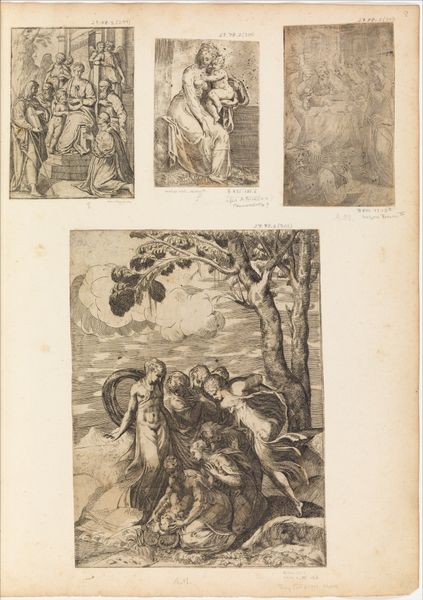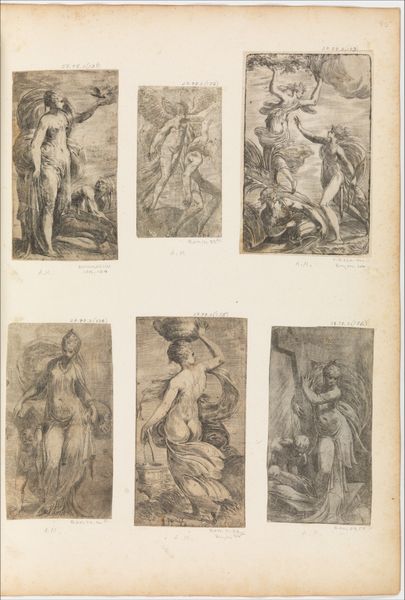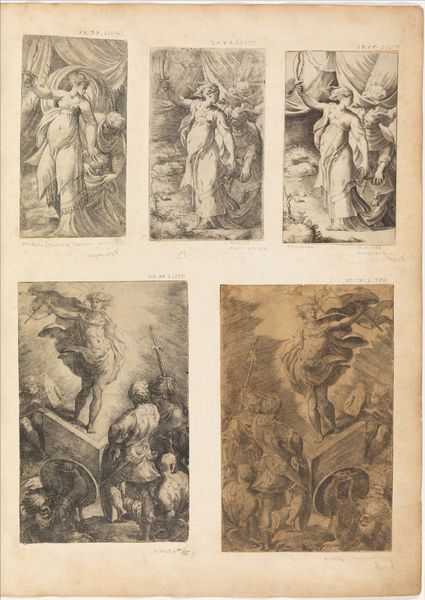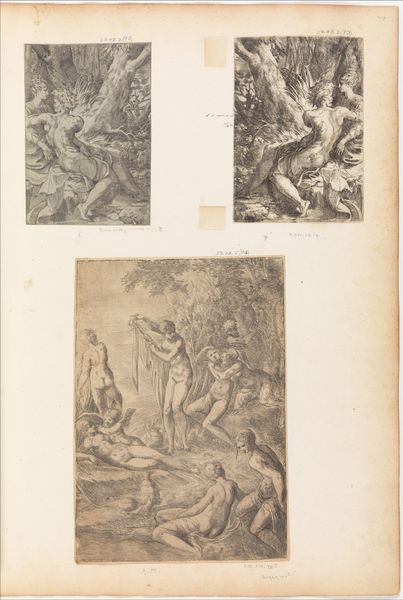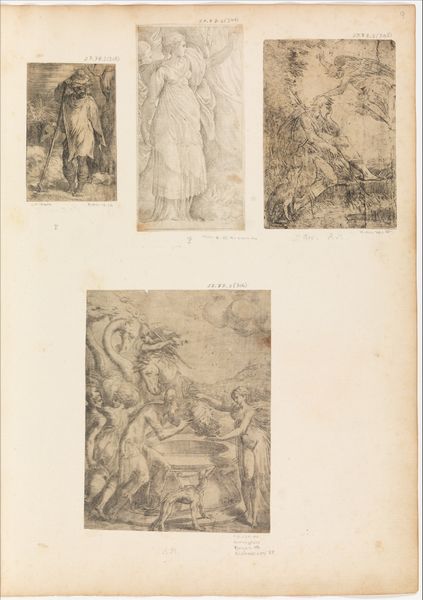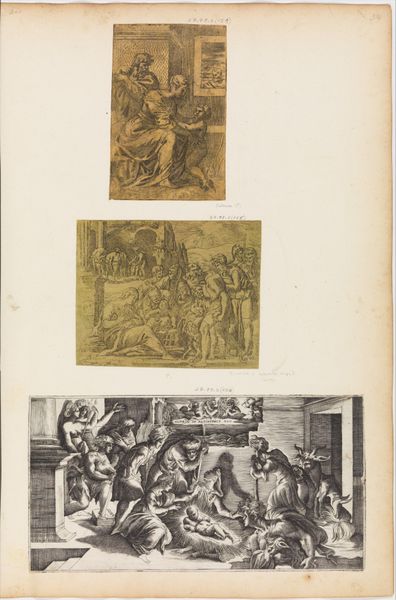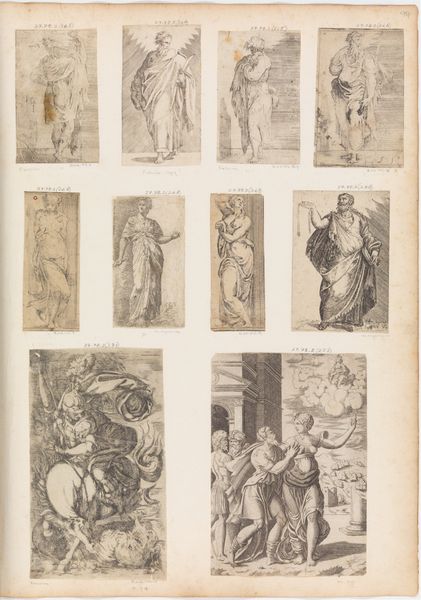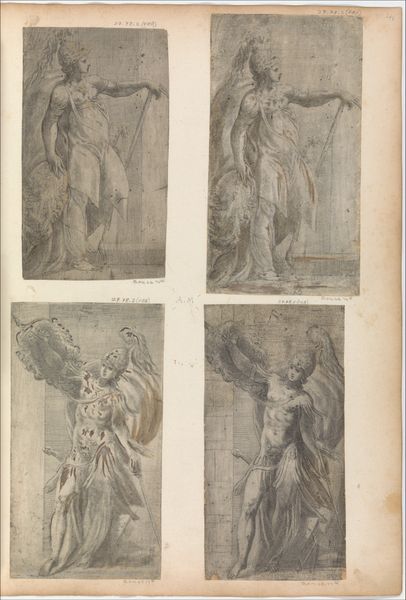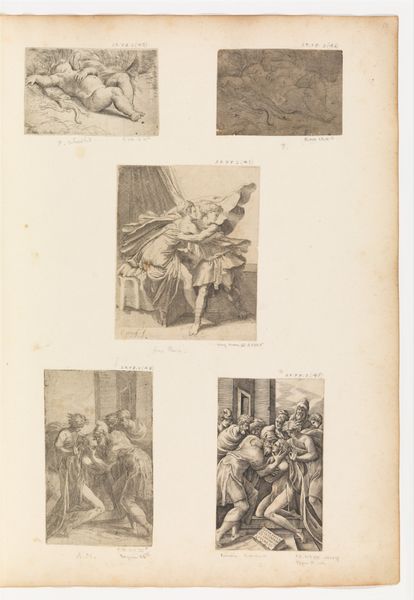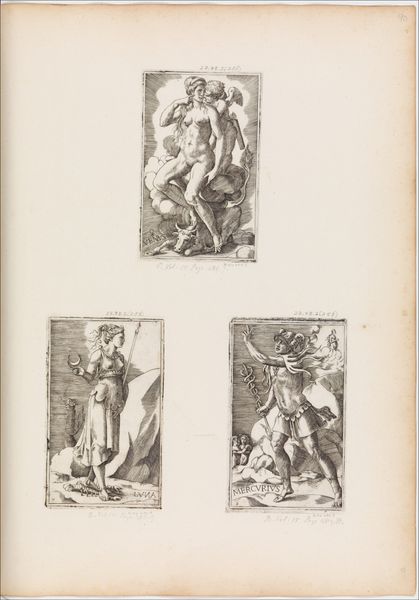
Moses Rescued from the Nile 1510 - 1563
0:00
0:00
drawing, print
#
drawing
# print
#
figuration
#
history-painting
#
italian-renaissance
Copyright: Public Domain
Editor: This is "Moses Rescued from the Nile" by Andrea Schiavone, dating from around 1510 to 1563. It’s a drawing, almost like a print, and the grouping of figures feels very dynamic. How would you interpret this work? Curator: Well, look at how Schiavone is engaging with the Old Testament story. Think about the act of rescuing Moses. This isn’t simply about saving one life; it's about preserving a future leader, a figure who will challenge oppression. Considering this through a lens of social justice, how might we understand the anxieties around leadership and liberation embedded within the image? Editor: That’s a powerful perspective! So, are you suggesting Schiavone was making a statement about resisting tyranny? Curator: Absolutely. The story of Moses, in its time and ours, serves as a powerful narrative for those struggling against oppressive forces. The Italian Renaissance wasn’t immune to social strife; this piece resonates with calls for social reform. Can we consider how Schiavone used figuration and themes of rescue to explore sociopolitical contexts and promote liberation? Editor: So, this work functions on multiple levels. It’s a religious scene, but also a reflection on the artist’s contemporary political landscape? Curator: Precisely. This allows us to explore not just the artwork itself, but the broader socio-political forces that influenced its creation. It urges us to look beyond surface narratives. Editor: This has changed how I view this print; now I see it as an act of resistance portrayed through religious imagery. Curator: Exactly, we move towards deconstructing the image, understanding its revolutionary potential through our interpretation and current critical perspectives.
Comments
No comments
Be the first to comment and join the conversation on the ultimate creative platform.
